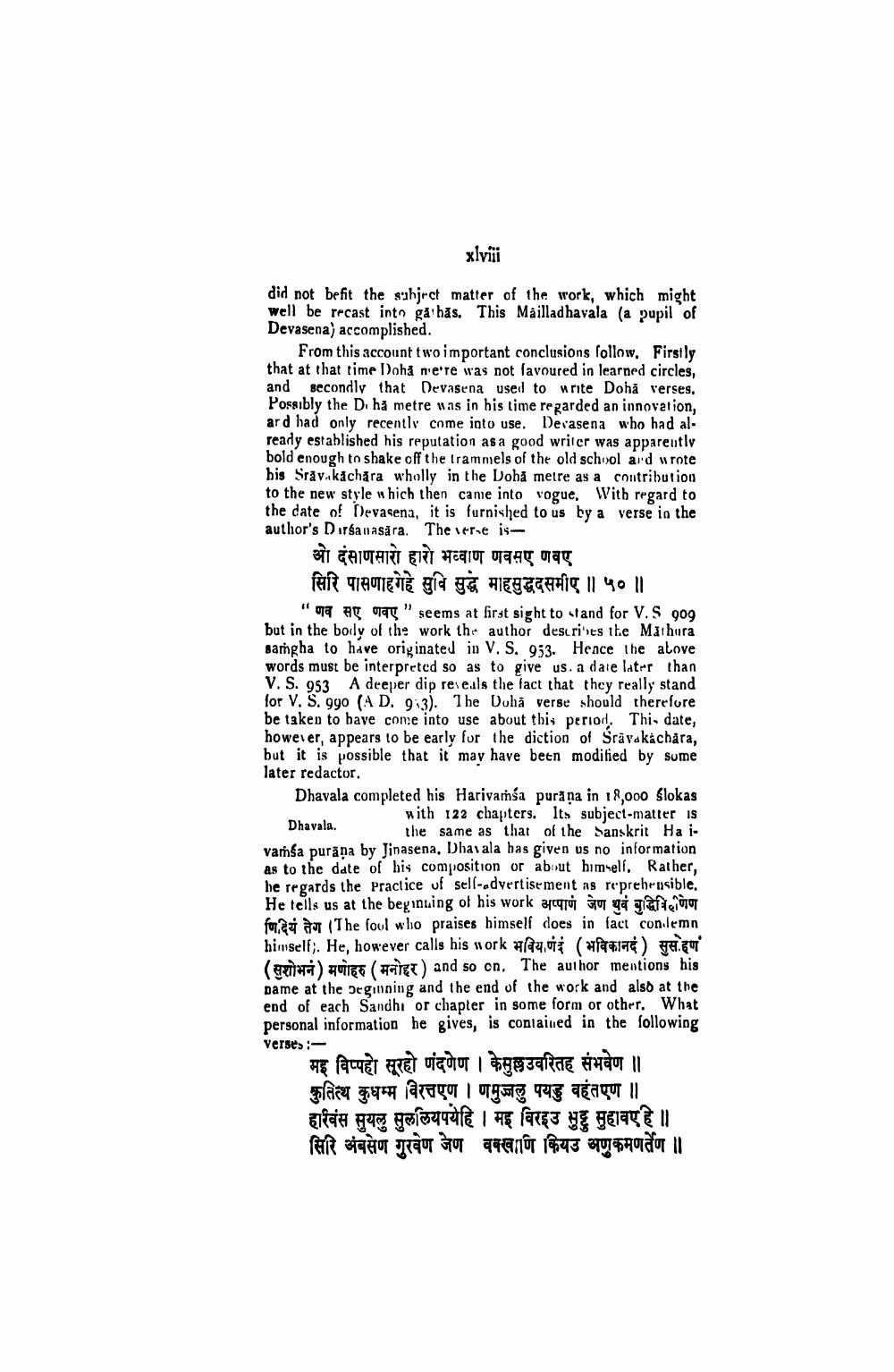________________
xlviii
did not befit the subject matter of the work, which might well be recast into ga has. This Mailladhavala (a pupil of Devasena) accomplished.
From this account two important conclusions follow. Firstly that at that time Doha n'e're was not favoured in learned circles, and secondly that Devasena used to write Doha verses. Possibly the Di ha metre was in his time regarded an innovation, ard had only recently come into use. Devasena who had already established his reputation as a good writer was apparently bold enough to shake off the trammels of the old school and wrote his Srav.kachara wholly in the Doha metre as a contribution to the new style which then came into vogue. With regard to the date of Devasena, it is furnished to us by a verse in the author's Dirsanasara. The verse is
ओ दसाणसारो हारो भव्वाण णवसए णवए
सिरि पासणाह गेहे सुविसुद्ध माहसुद्धदसमीए ॥ ५० ॥
" णव सए णवए "1 seems at first sight to stand for V.S 909 but in the body of the work the author describes the Mathura samgha to have originated in V. S. 953. Hence the above words must be interpreted so as to give us. a dare later than V. S. 953 A deeper dip reveals the fact that they really stand for V. S. 990 (A D. 93). The Duha verse should therefore be taken to have come into use about this period. This date, however, appears to be early for the diction of Sravakachara, but it is possible that it may have been modified by some later redactor.
Dhavala.
Dhavala completed his Harivamsa purana in 18,000 slokas with 122 chapters. Its subject-matter is the same as that of the Sanskrit Ha ivamsa purana by Jinasena, Dhavala has given us no information as to the date of his composition or about himself. Rather, he regards the Practice of self-advertisement as reprehensible. He tells us at the beginuing of his work अप्पाणं जेण ध्रुवं बुद्धिविण णिदियं तेग (The foul who praises himself does in fact condemn himself). He, however calls his work भविय णंदं (भविकानदं ) सुस. इण ( सुशोभनं ) मणीहरु (मनोहर) and so on. The author mentions his name at the beginning and the end of the work and also at the end of each Sandhi or chapter in some form or other. What personal information he gives, is contained in the following
verses:
मइ विप्पो सूरहो णंदणेण | केसुल्लउवरितह संभवेण ॥ कुतित्थ कुधम्म विरत्तएण । णमुज्जलु पयडु वहंतएण || हारबंस सुयलु सुललियपयेहि । मद्द विरइउ सुट्टु सुहावए है || सिरि अंबसेण गुरवेण जेण वक्खाणि कियउ अणुकमणर्तेण ॥




